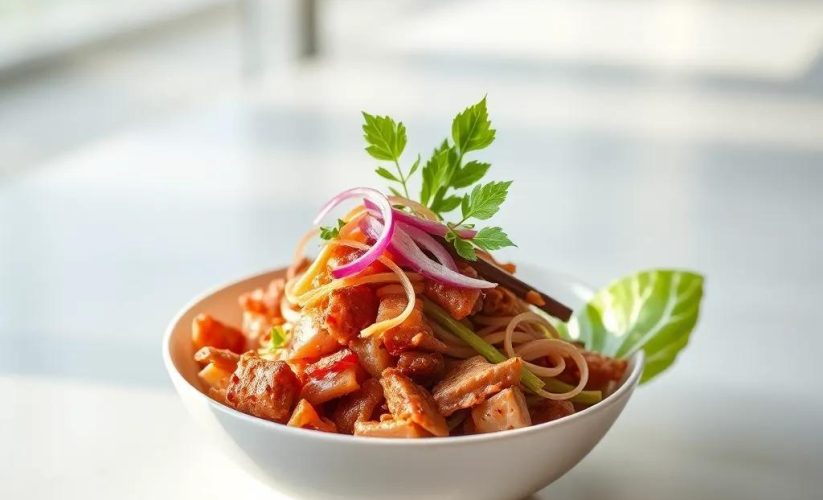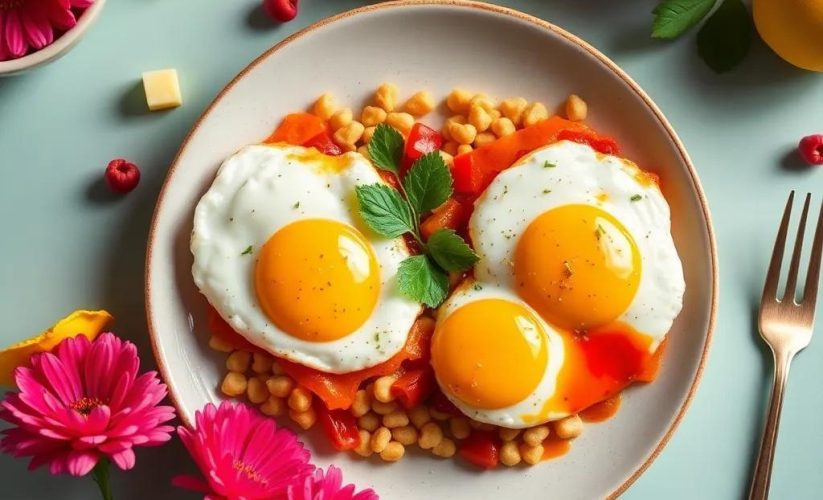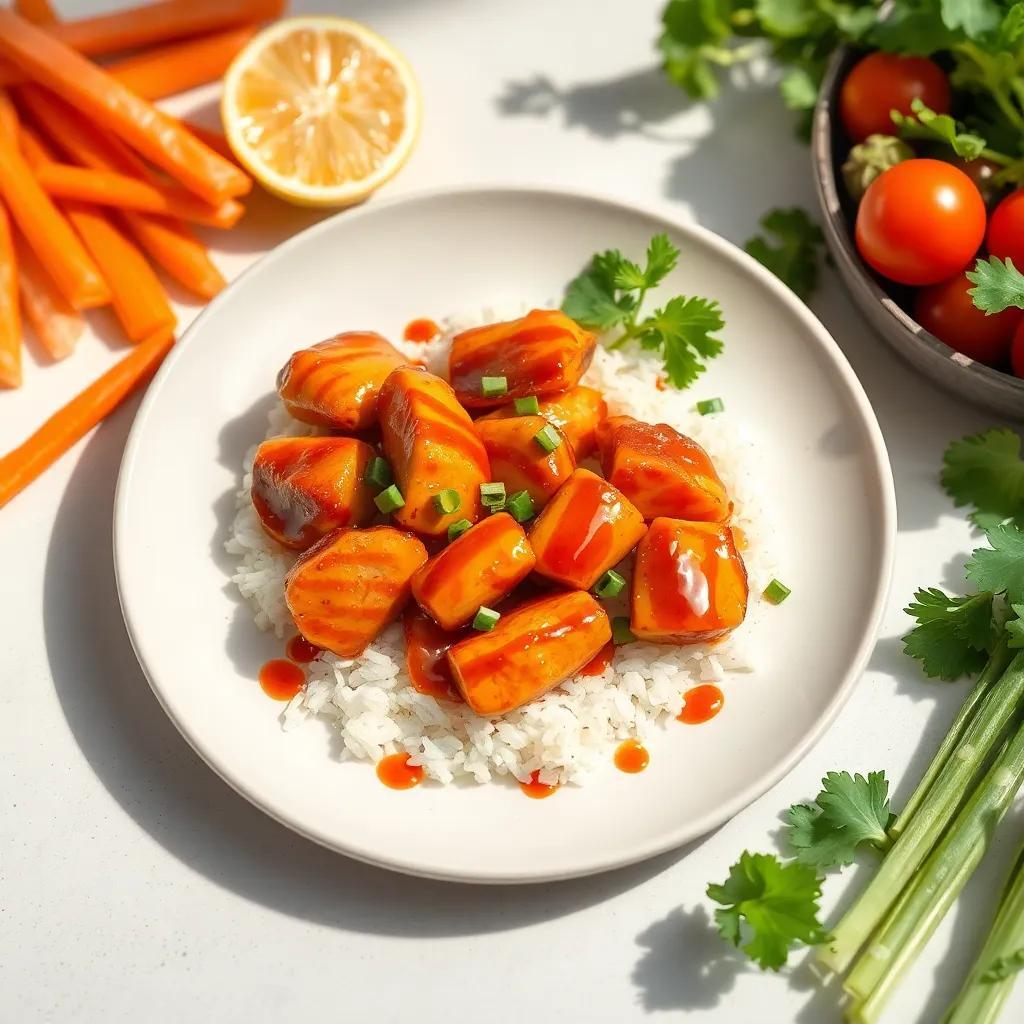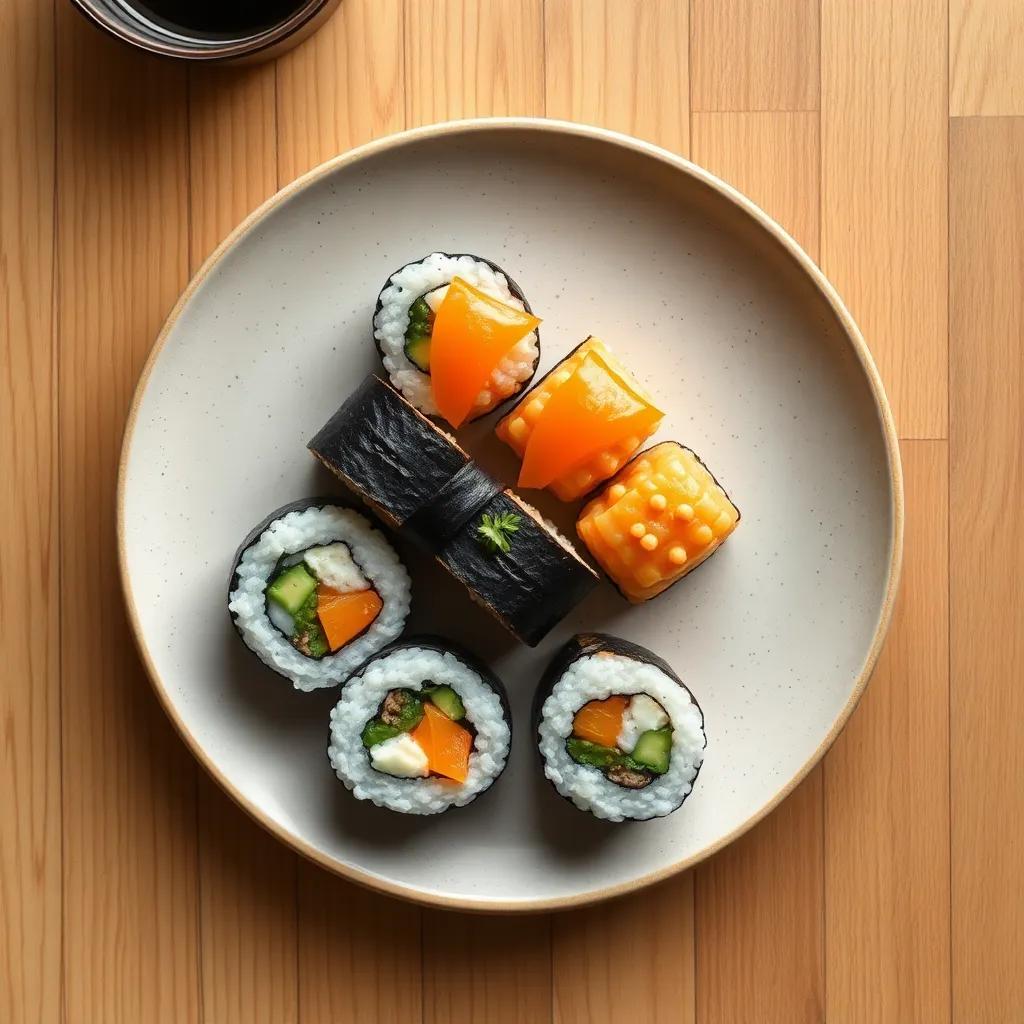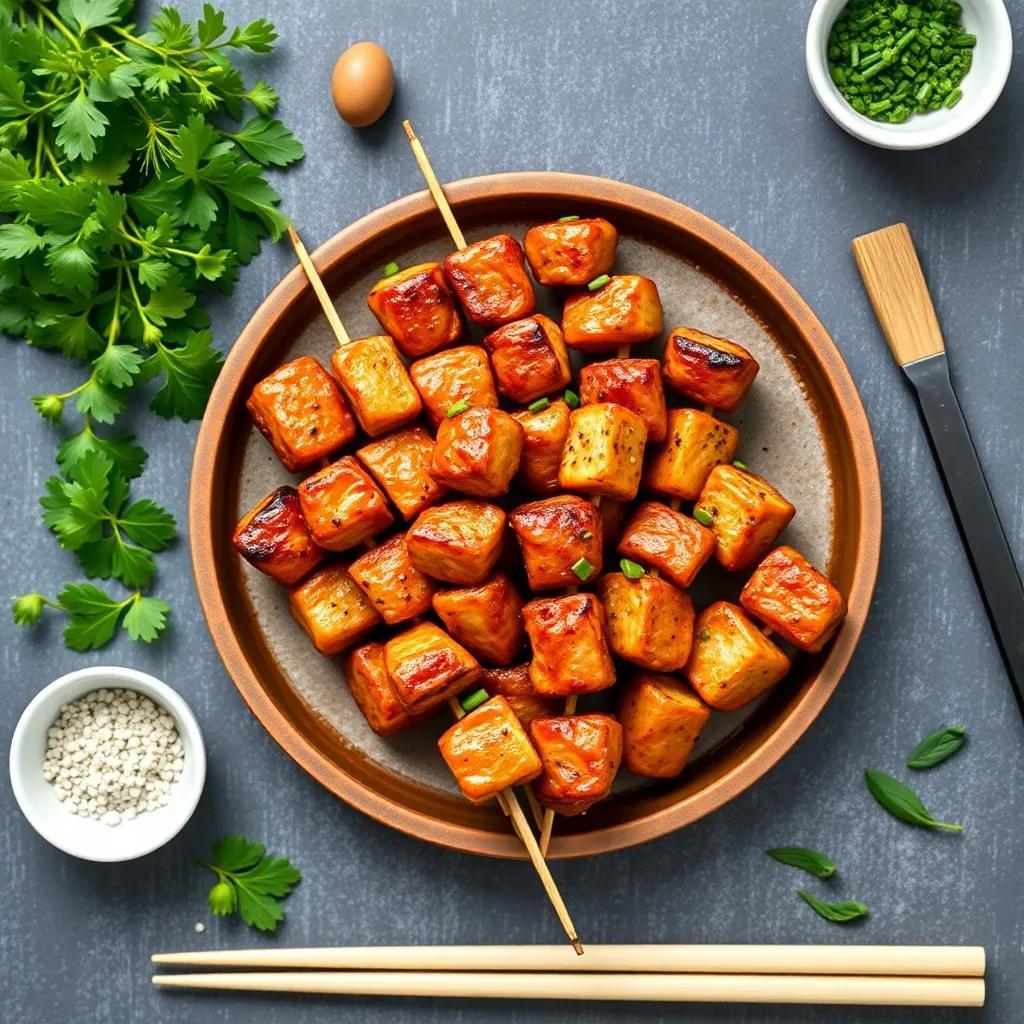Unlock Irresistible Flavor: Easy 30-Minute Gyoza Recipe Guide

Unlock Irresistible Flavor: Easy 30-Minute Gyoza Recipe Guide
🌍 Cuisine: Japanese
⚙️ Difficulty: Easy
Ingredients
Nutrition Facts
250 kcal
Instructions
- In a large bowl, combine ground pork, chopped cabbage, green onions, ginger, garlic, soy sauce, sesame oil, salt, and white pepper. Mix well until all ingredients are evenly incorporated.
- Place a gyoza wrapper on a clean surface and spoon about 1 teaspoon of the filling into the center.
- Wet the edges of the wrapper with water, fold it in half to seal, and pleat the edges to create a crescent shape. Repeat until all filling is used.
- Heat 1 tablespoon of vegetable oil in a large non-stick skillet over medium-high heat.
- Place gyoza in the skillet, flat side down, in a single layer without overcrowding.
- Cook for 2-3 minutes or until the bottoms are golden brown and crisp.
- Carefully add 1/3 cup of water to the skillet and immediately cover with a lid to steam the gyoza.
- Steam for about 5-6 minutes or until the water evaporates and the wrappers become translucent.
- Remove the lid and cook for another 1-2 minutes to re-crisp the bottoms.
- Transfer gyoza to a serving plate and serve hot with a dipping sauce made from soy sauce and rice vinegar.
Serving Suggestions
- Serve with a side of steamed white rice for a complete meal.
- Pair gyoza with a bowl of miso soup for a traditional Japanese appetizer set.
- Offer a dipping sauce combination of soy sauce, rice vinegar, and chili oil for added zest.
- Garnish with finely chopped scallions and toasted sesame seeds for extra flavor and texture.
- Enjoy alongside a cold glass of sake or iced green tea for a refreshing contrast.
- Serve as part of a dim sum spread with other dumplings and small bites.
- Add pickled vegetables on the side to balance the richness of the pork filling.
Table of Contents
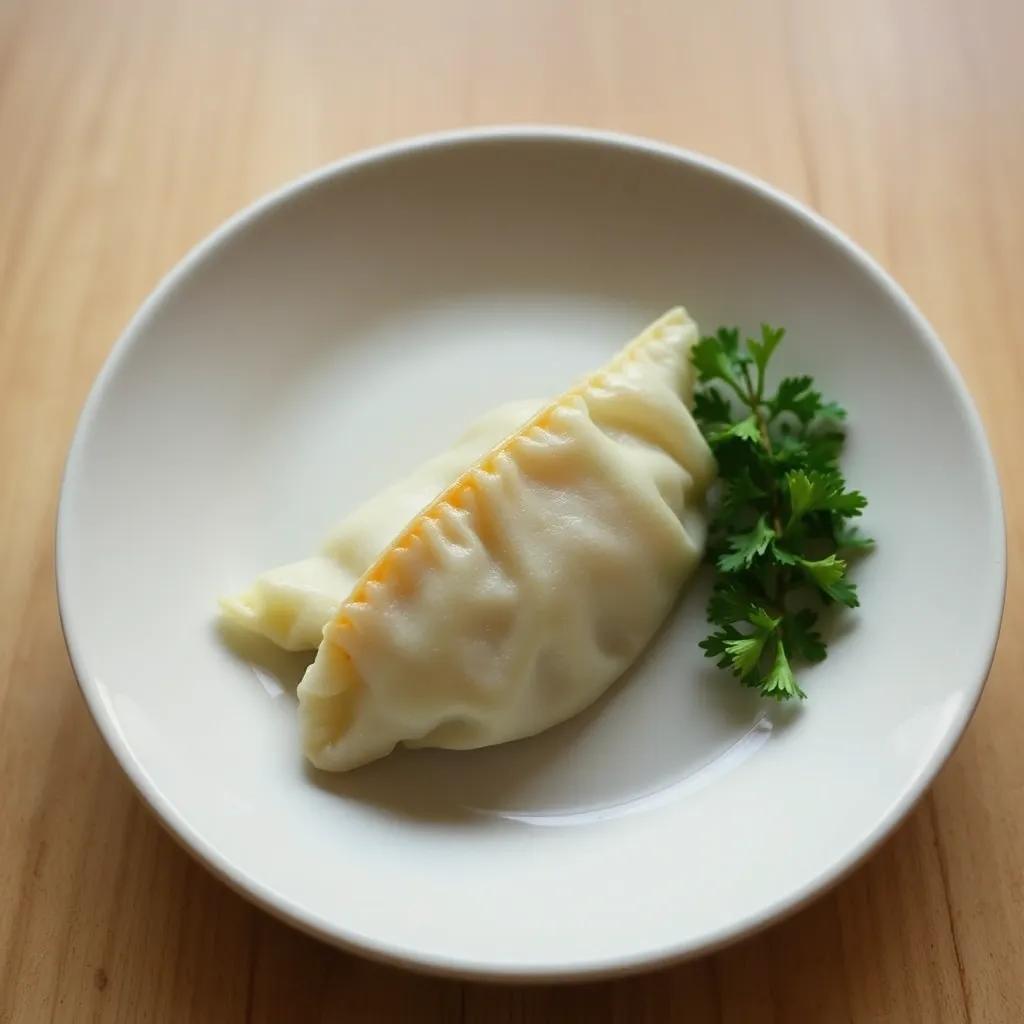
Intro
There’s something truly satisfying about homemade gyoza—the perfect harmony of a crisp, golden bottom and tender, steamed wrapper encasing a savory filling. This recipe invites you to recreate that delightful bite in just 30 minutes, making it an ideal choice whether you’re whipping up a quick weeknight appetizer or impressing guests with a crowd-pleasing starter. Its approachable steps and straightforward ingredients mean you don’t need to be a seasoned chef to master this classic Japanese favorite.
What makes this gyoza recipe especially exciting is how it balances convenience with authentic flavor. You’ll enjoy the process of building these little dumplings by hand, turning a simple cooking session into a hands-on experience that’s both fun and rewarding. Plus, its versatility means it fits right into casual dinners, festive gatherings, or even a cozy solo meal paired with your favorite dipping sauce.
Whether you’re new to Asian cuisine or looking to add a reliable, tasty recipe to your repertoire, this guide unlocks the secrets to crafting irresistible gyoza effortlessly. Get ready to savor a dish that’s as satisfying to make as it is to eat.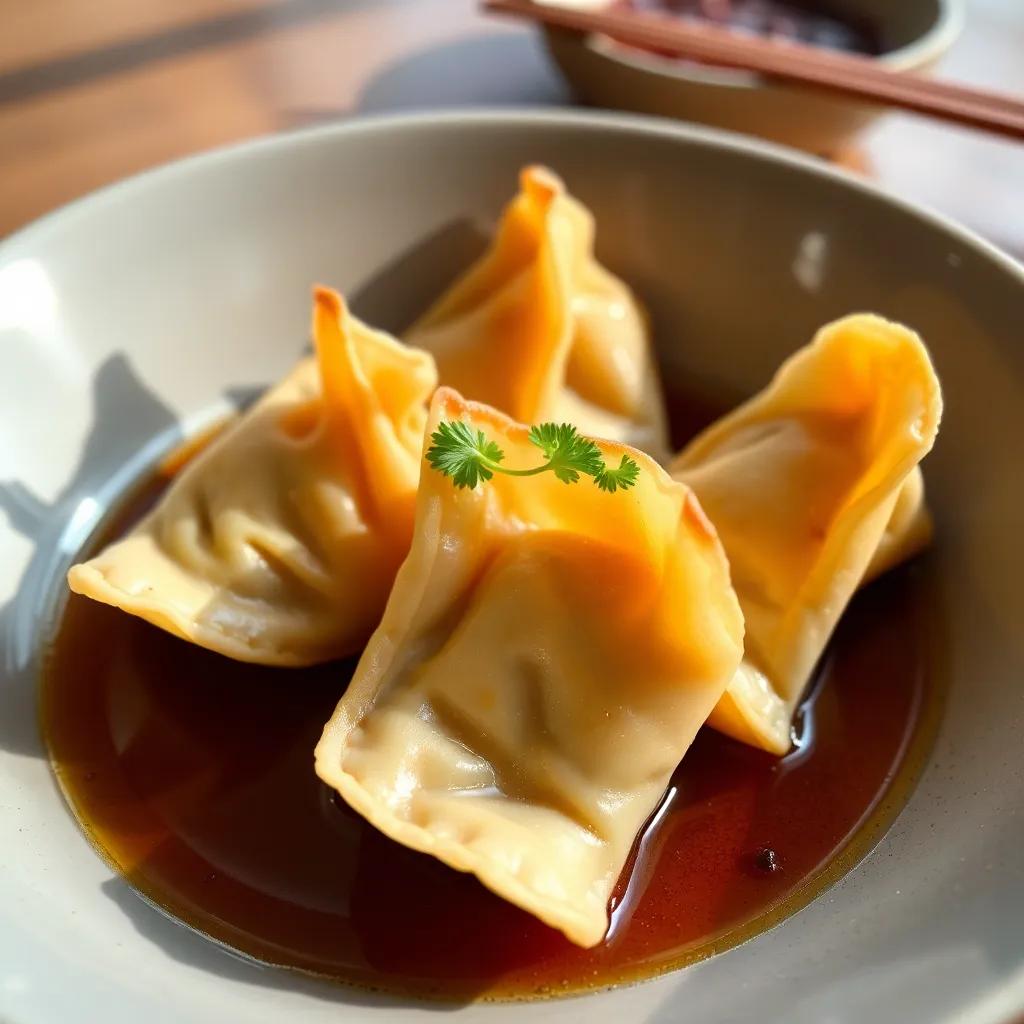
Ingredient Notes
When it comes to crafting truly delicious gyoza, a few key ingredients play starring roles in achieving that iconic flavor and texture. Understanding their importance and knowing what to look for can elevate your homemade dumplings from good to unforgettable.
Ground Pork
This is the heart of the filling, delivering savory richness and moisture. Choosing pork with a decent fat content—around 20% fat—is ideal because it helps keep the filling juicy as it cooks. Too lean, and the gyoza might turn out dry; too fatty, and the wrapper could become soggy. If ground pork isn’t your preference or isn’t easily available, ground chicken or turkey can be used as leaner alternatives, though you may want to add a touch more oil or a splash of soy sauce to maintain moisture and richness.
Gyoza Wrappers
The delicate yet resilient wrapper encapsulates the filling and provides that signature chew. Typically made from wheat flour and water, these wrappers are much thinner than traditional dumpling skins, allowing them to steam quickly and crisply pan-fry beautifully. When shopping, look for fresh or frozen wrappers sold in Asian markets or well-stocked grocery stores. Keep them covered with a damp cloth during assembly to prevent drying out. If you can’t find gyoza wrappers, thin wonton wrappers can serve as a workable substitute, though they may require adjustment in cooking times.
Ginger and Garlic
These aromatic powerhouses infuse the filling with bright, spicy warmth and deep umami notes. Fresh ginger root, finely minced, offers a more vibrant and less sharp bite than pre-ground or powdered varieties, so whenever possible, opt for fresh. Garlic lends a mellow pungency that anchors the overall flavor. If fresh ginger or garlic isn’t on hand, use freshly grated powdered ginger or garlic paste, adjusting quantities to taste since these alternatives tend to be more concentrated.
Soy Sauce and Sesame Oil
Together, these provide the crucial umami and subtle nutty aroma that bring the filling to life. Soy sauce adds salty depth and a hint of sweetness, while sesame oil lends a toasted fragrance that’s quintessential in many Asian dishes. When selecting soy sauce, light or “usukuchi” soy sauce is traditionally used for its delicate saltiness and color, but regular soy sauce works well too. For sesame oil, a little goes a long way—choose toasted sesame oil for the most authentic flavor. If sesame oil isn’t available, you can omit it altogether or use a small drizzle of toasted peanut oil, though the flavor will vary.
By paying attention to these ingredients’ quality and characteristics, you set the stage for gyoza that bursts with balanced, irresistible flavor and texture—making every bite a little celebration of authentic Japanese comfort food.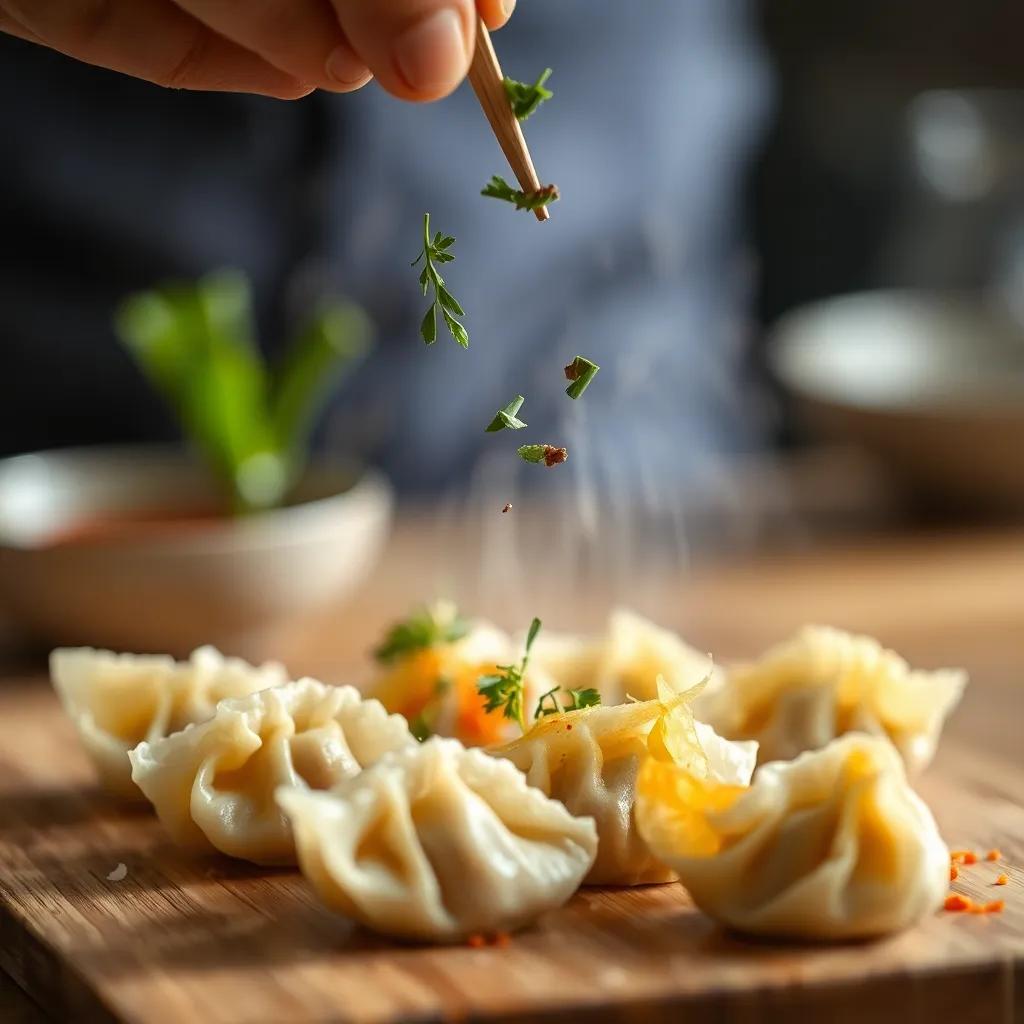
Tips & Variations
Mastering the art of gyoza is as much about the technique and creativity as it is about the basic recipe. Here are some pro tips and clever variations to elevate your dumpling game and adapt this easy recipe to fit your lifestyle and preferences.
- Achieve the Perfect Crisp: A hot, non-stick skillet and just the right amount of oil make all the difference. Avoid overcrowding the pan—this ensures each gyoza has contact with the surface, creating that iconic golden crust. After steaming, remove the lid to let excess moisture evaporate and let the bottoms crisp up again for an irresistible texture contrast.
- Seal Like a Pro: Wetting the edges of the wrapper with cold water works well, but some cooks prefer vodka or even a mix of flour and water as a “glue” for a stronger seal that won’t pop during cooking. Don’t be afraid to practice your folding technique—pleating the edges not only looks beautiful but helps keep the filling securely inside.
- Customize Your Filling: Though ground pork is classic, try swapping in ground chicken, turkey, or even finely chopped shrimp for lighter versions. For vegans and vegetarians, mashed firm tofu combined with finely shredded shiitake mushrooms, grated carrot, and chopped napa cabbage make a wonderfully savory plant-based filling. Add a splash of vegan soy sauce or tamari to boost umami.
- Gluten-Free Adaptation: Use gluten-free dumpling or wonton wrappers, often made from rice or tapioca flour blends. Since these can be more delicate, handle with extra care. Another approach is making your own rice paper wrappers—briefly soak and wrap the filling for a chewy, translucent alternative that steams beautifully without frying.
- Enhance the Flavor Profile: Try adding finely chopped water chestnuts or bamboo shoots for crunch, or a teaspoon of miso paste to dunk up the umami factor in the filling. A dash of chili flakes or a few drops of chili oil inside the dipping sauce can add a welcomed heat, balancing the savory richness.
- Creative Wrapping Techniques: Beyond the classic crescent shape, experiment with folding round parcels or small purse-style dumplings using a thicker wrapper to create a satisfying chew and different mouthfeel. This can be fun for serving a variety at parties and impresses guests with visual flair.
- Dipping Sauce Twists: While the soy sauce and rice vinegar combo is traditional, mixing in grated fresh ginger, toasted sesame seeds, or a hint of honey offers layers of complexity. For a creamy spin, stir in a touch of Japanese mayo or blend in some crushed peanuts for an interesting texture contrast.
- Batch Cooking and Freezing: Assemble gyoza in bulk, freeze them uncooked on a parchment-lined tray, then transfer to airtight bags. When ready to cook, steam or pan-fry straight from frozen—adding a minute or two to cooking time. This method lets you enjoy fresh-tasting dumplings any day without the prep hassle.
By embracing these tips and variations, you can tailor your gyoza experience—from nutritious weeknight meals to show-stopping appetizers for entertaining—all while keeping the process enjoyable and approachable.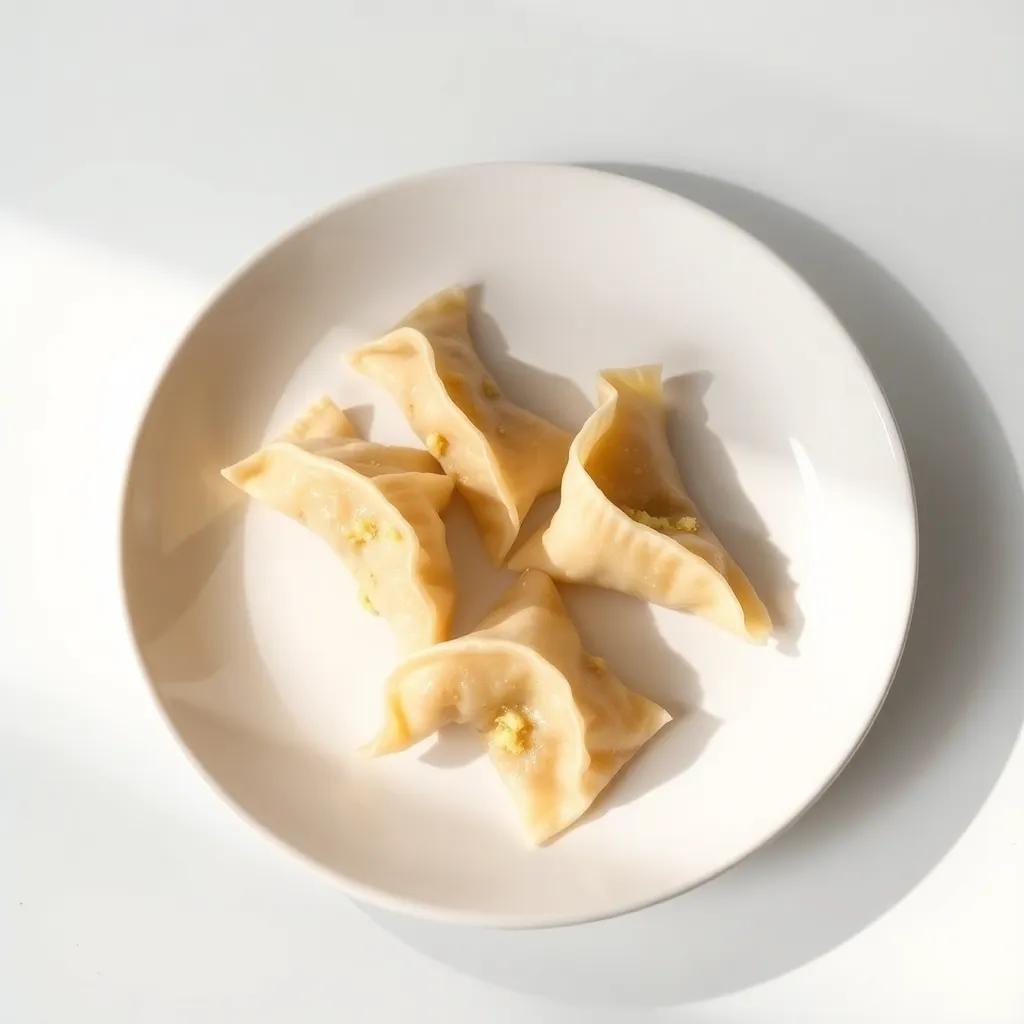
Leftovers & Storage
When it comes to dealing with leftovers of your homemade gyoza, proper storage is key to preserving that satisfying contrast of crispy bottoms and tender wrappers. After cooking, allow your gyoza to cool completely at room temperature—this helps prevent condensation that can make them soggy when stored.
Store leftover gyoza in an airtight container lined with a paper towel. The paper towel absorbs excess moisture and keeps the dumplings from becoming mushy. In the refrigerator, properly stored gyoza will stay fresh and flavorful for up to 2 days. For best texture, gently reheat them in a non-stick skillet over medium heat, adding a splash of water and covering briefly to revive the steam-cooked tenderness before crisping the bottoms again. Avoid microwaving if you want to maintain that delightful crunch.
If you’re looking to meal prep or save gyoza for longer, freezing is an excellent option. It’s best to freeze them uncooked: arrange your assembled gyoza in a single layer on a parchment-lined tray and freeze until solid, about 1-2 hours. Once frozen, transfer them to a resealable freezer bag or an airtight container, separating layers with parchment paper to prevent sticking. Frozen uncooked gyoza can be stored for up to 2 months without significant loss of quality.
When ready to enjoy, there’s no need to thaw—cook them straight from frozen using your usual pan-fry and steam method; just add a few extra minutes to the process. This allows for quick, convenient meals that retain the authentic flavors and textures you love.
For cooked gyoza, freezing is also possible but not ideal for crispiness. If you must freeze cooked leftovers, cool thoroughly, place in airtight containers, and freeze for up to 1 month. Reheat in a skillet with minimal water to avoid sogginess.
Lastly, if you plan to pack gyoza for lunch or an on-the-go snack, consider keeping them separate from dipping sauce until ready to eat to prevent sogginess. Use insulated containers to maintain warmth, or enjoy them cold as a delightful bite with a contrasting texture.
By following these storage and reheating tips, you can extend the joy of your homemade gyoza beyond one meal—making each leftover bite just as tempting as the first.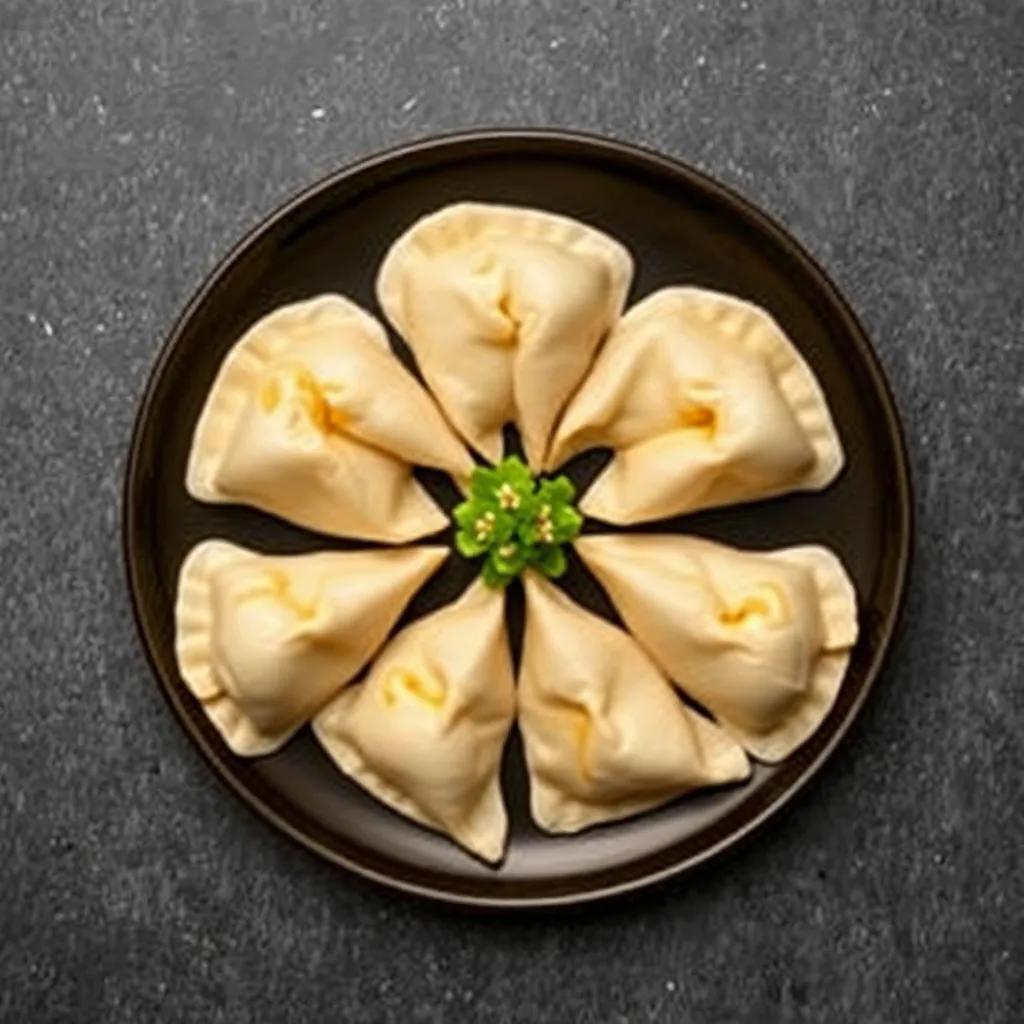
Behind the Recipe
Gyoza, while now beloved worldwide as a delicious appetizer or snack, carries with it a rich cultural story that traces back centuries. Its roots lie in the Chinese jiaozi dumpling, brought to Japan by way of Chinese immigrants and adapted over time into what we now know as “gyoza.” Unlike its Chinese cousin, Japanese gyoza traditionally features thinner wrappers, a smaller, more delicate shape, and a unique cooking method that combines frying and steaming to achieve its signature crispy bottom and tender top.
This recipe reflects that blend of cultural exchange and culinary evolution. It captures the essence of Japan’s post-war era innovation, when affordable pork and convenient gyoza wrappers made homemade dumplings a popular comfort food for families across the country. In fact, gyoza became so ingrained in Japanese food culture that it evolved from a simple home-cooked treat to a staple found in ramen shops, izakayas, and even street stalls.
On a personal note, this recipe was inspired by a family tradition shared around the kitchen table, where making gyoza together is less about precision and more about connection. Each fold is a moment of calm, each pan sizzle a hum of anticipation—turning cooking into a communal experience. It reminds us that great food often comes from simple gestures and shared stories.
By making gyoza at home with this easy 30-minute method, you’re not just creating a tasty dish—you’re participating in a vibrant culinary heritage that celebrates adaptation, togetherness, and the joy of savoring something crafted with care. Whether you enjoy them with friends or quiet moments alone, these gyoza carry with them a story far bigger than their size on the plate.
FAQ
Can I substitute chicken with tofu or other proteins in this gyoza recipe?
What’s the best way to freeze gyoza for later?
How can I make this recipe gluten-free?
Is there a quicker way to prep the filling without sacrificing flavor?
What’s the best method for reheating leftover gyoza?
Can I customize the seasoning to suit different tastes?
Final Thoughts
With its delightful crispy edges and juicy filling, this easy 30-minute gyoza recipe brings irresistible flavor straight to your kitchen—proving that homemade Asian comfort food can be both quick and satisfying. Whether you’re a cooking novice or a seasoned foodie, these little dumplings are sure to become a favorite staple in your recipe collection.
Give them a try and let us know how your gyoza adventure turns out! We’d love to hear your thoughts, see your ratings, or discover any creative twists you add along the way. Happy cooking and even happier eating!

